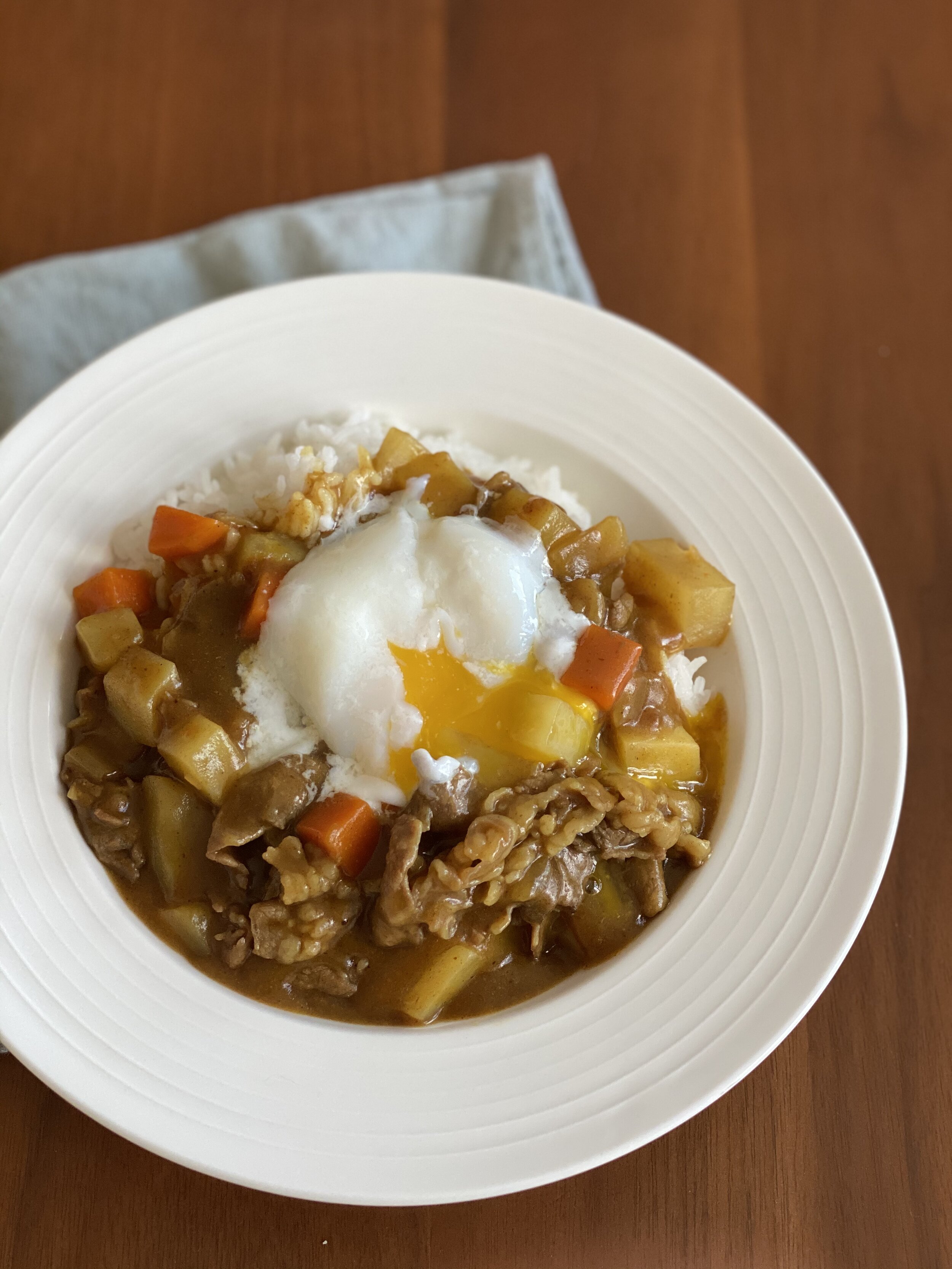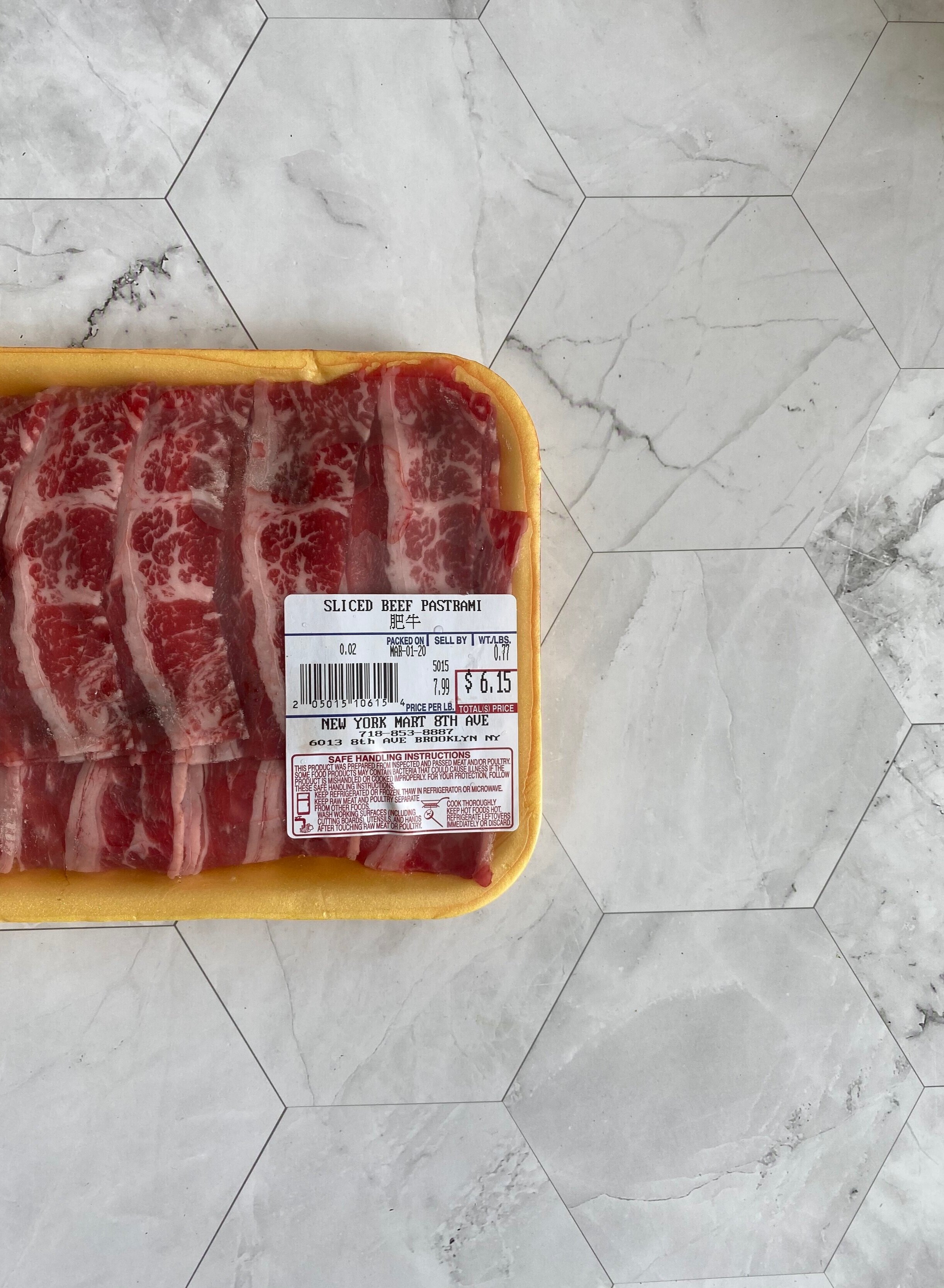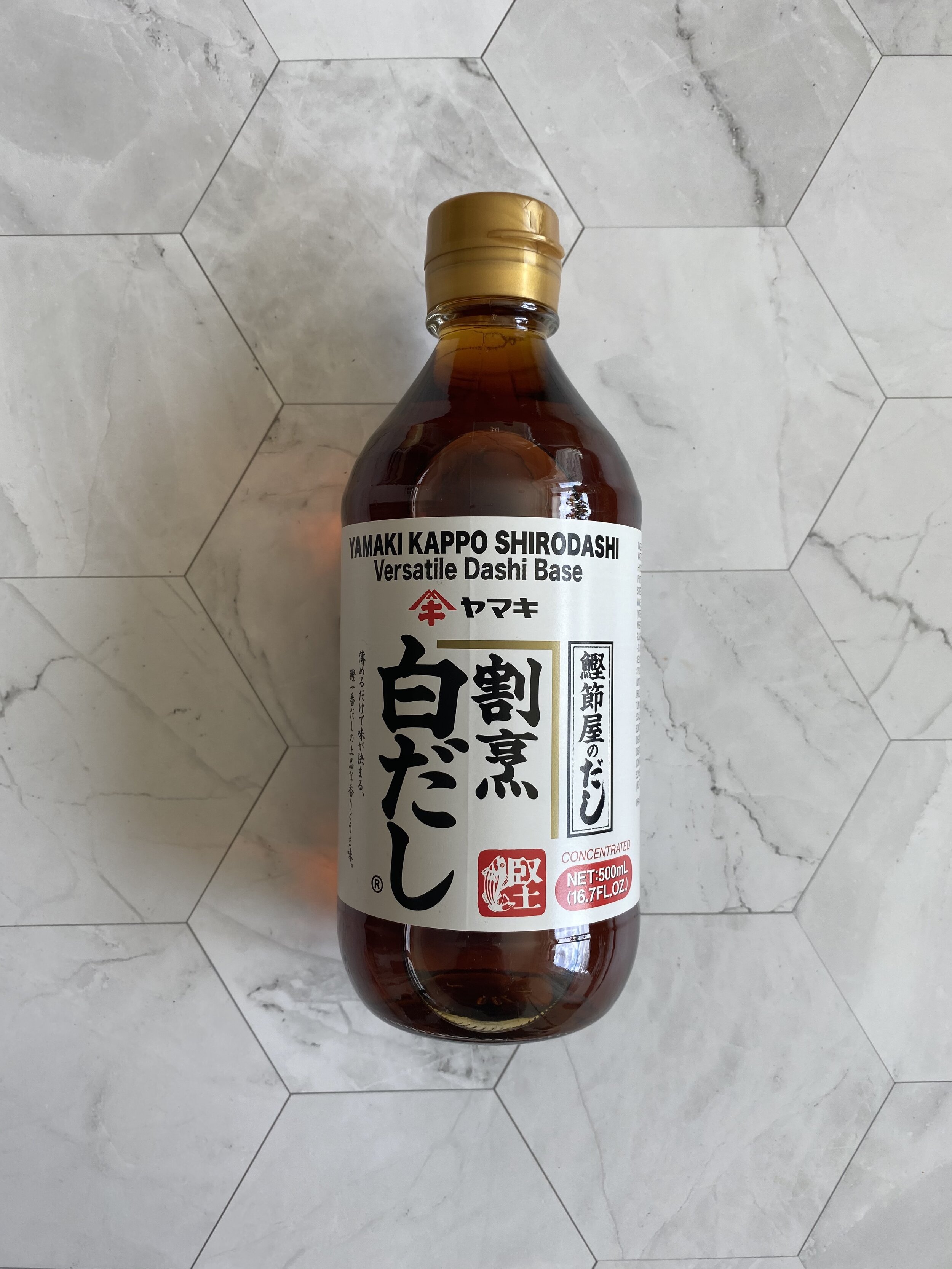Jay’s Japanese curry gyudon
Jay loves making his Japanese curry gyudon when we have long weeks ahead. It is a meal in itself loaded with fatty thin sliced beef, creamy potatoes and sweet carrots. Often times, we generously spoon it over a bed of steaming hot white rice and topped with the perfect onsen egg. After taking one bite, I always think he spent hours over the stove but surprisingly this signature dish of his only takes 45 minutes! Give this a try and I promise this will be part of your weekly rotation as well.
Jay’s Japanese curry gyudon
Prep time: 35 minutes | Total time: 45 minutes
Serves: 6-8
Ingredients:
2 large eggs, at room temperature
1/2 cup dashi*
1/2 cup mirin**
1/4 cup light soy sauce
2 tablespoons sugar
2 tablespoons vegetable oil
6 cloves garlic, minced
2 large yellow onions, thinly sliced
1 1/2 pound sliced beef pastrami (Photo above)
Kosher salt
Freshly ground pepper
4 medium all-purpose potatoes, peeled and diced into 1/2-inch cubes
2 medium carrots, peeled and diced into 1/2-inch cubes
1 7.8-ounce box Golden Curry Medium Hot***
Steamed white rice, for serving
Instructions:
Fill a small saucepan with 4 1/4 cups water, bring to a boil over high heat. Once boiling, turn off heat and add 1 cup cold water. Gently add the eggs to the saucepan. Cover and let sit for 18 minutes. Remove eggs from water and set aside.
In a medium bowl, whisk the dashi, mirin, soy sauce and sugar until sugar is mostly dissolved. Set aside.
Heat a Dutch oven or large skillet over medium heat and add vegetable oil. Once shimmering, add garlic and onions. Cook, stirring occasionally, until onions have slightly soften, about 5 minutes. Add half the mirin mixture to the Dutch oven and let simmer until it has reduced by half, about 3 minutes more. The onions will cook in the mixture and continue to soften.
Push the onions to one side of the Dutch oven and add the sliced beef. Stir fry until the beef is no longer red, about 4 minutes. Add the remaining mirin mixture and let simmer until liquid is most reduced, about 3 minutes more. Season with 1/2 teaspoon salt and a few grounds of black pepper.
Add the diced potatoes, carrots and 6 cups water to the Dutch oven. Bring to a boil over high heat. Once boiling, lower heat to medium-low and let simmer until vegetables are fork tender, about 10 minutes.
Once the vegetables are tender, turn the heat off. Break the Golden Box curry into cubes. Add to the Dutch oven and stir until cubes have melted with the residual heat. Turn heat back to low and let simmer while stirring constantly for 5 minutes. Season with salt and pepper to taste.
Serve over steamed white rice or noodles and crack the onsen egg**** on top. Enjoy!
Cook’s Note
What is dashi?*
Dashi is Japanese fish broth. It is a base for many iconic dishes such as miso soup. When added to soups and broths, it adds another layer of umami. Dashi is also a flavor base for many grilled foods such as okonomiyaki and takoyaki. My favorite brand is from Yamaki Kappo Shirodashi.
If you need to substitute dashi, you can use chicken broth with anchovy paste or fish sauce.
4 cups chicken broth mixed with 1 teaspoon anchovy paste
4 cups chicken broth mixed with 2 tablespoons fish sauce
What is mirin?**
Mirin is an essential condiment used in Japanese cuisine. It is a type of rice wine similar to sake, but with a lower alcohol content and higher sugar content. Some brands have aji mirin instead of mirin, aji mirin is sweeter due to more added sugar. Rather than waiting for the natural fermentation process to occur. My favorite brand is from Kikkoman Aji Mirin.
What is Golden Curry and where can I find it?***
Golden Curry is a curry roux. Each package contains two 4-cubed brick. Adding them to stews and soups will give you the iconic sweet Japanese curry flavor and texture. It is available in 4 different levels of spiciness: Mild, Medium Hot, Hot and Extra Hot. You can find it here.
What is an onsen egg aka 63 degrees egg?****
Onsen tamago aka egg is a traditional Japanese low temperature egg which is originally slow cooked in the water of onsen hot springs in Japan. The egg has a unique texture in that the white tastes like a delicate custard and the yolk comes out firm, but retains the color and creamy texture of an uncooked yolk.
Source.: Wiki
Another popular name for this egg is called the 63 degree egg. When using a sous vide machine, set to 63 degrees C for 45 minutes.



